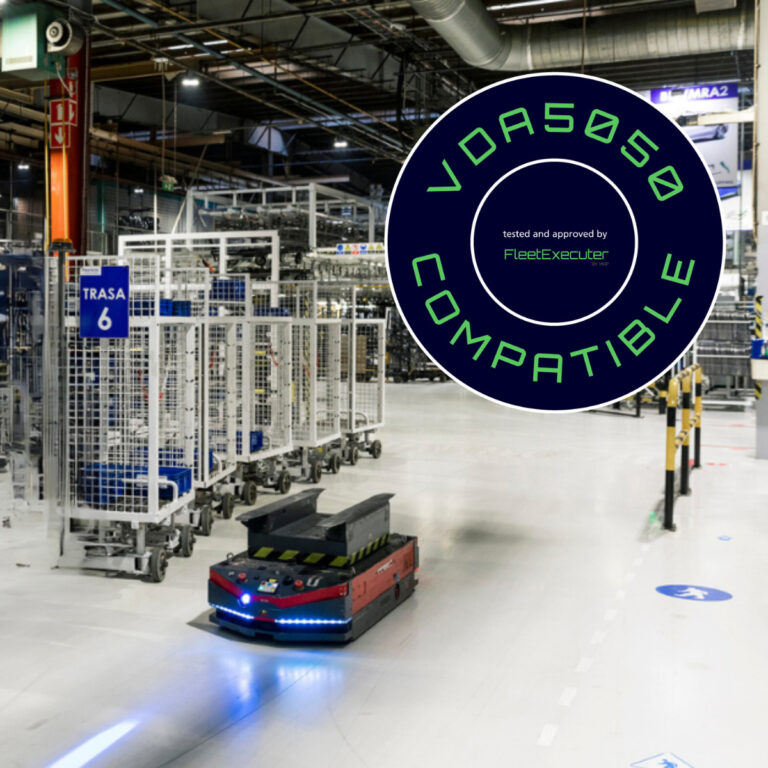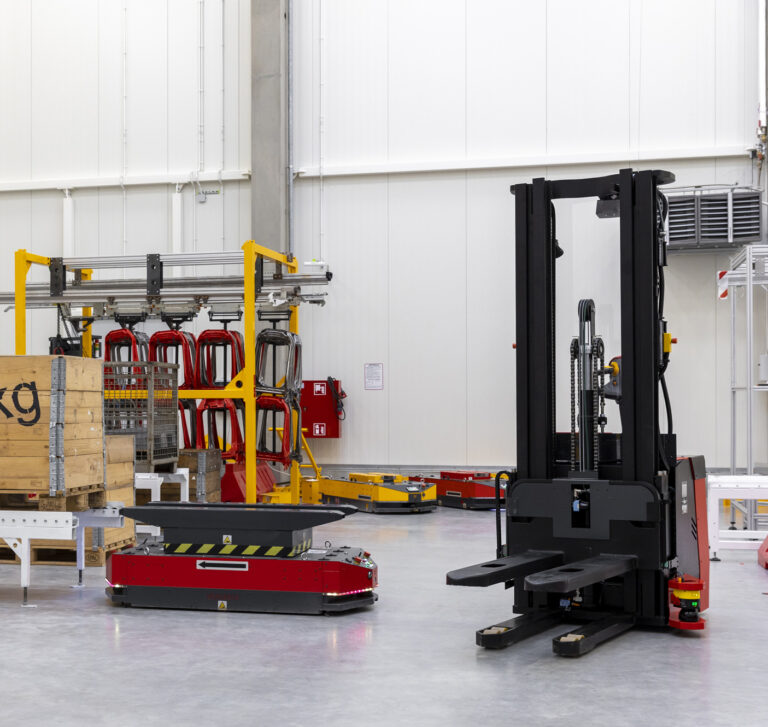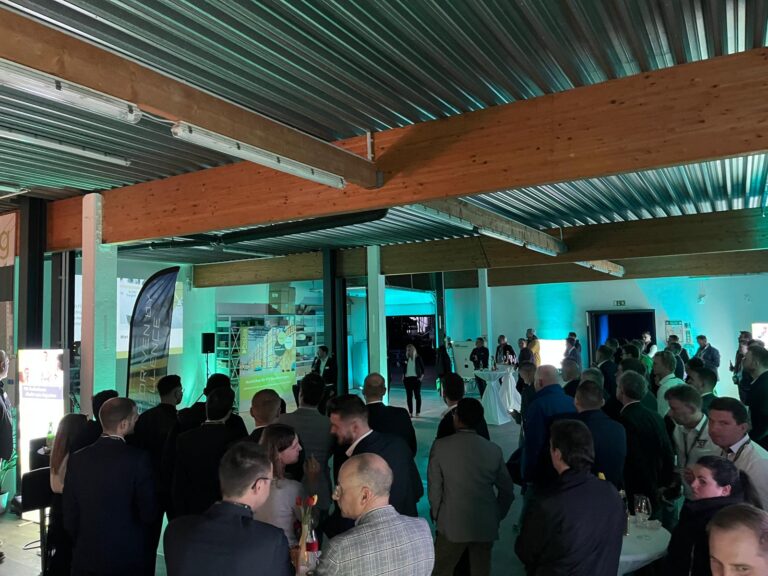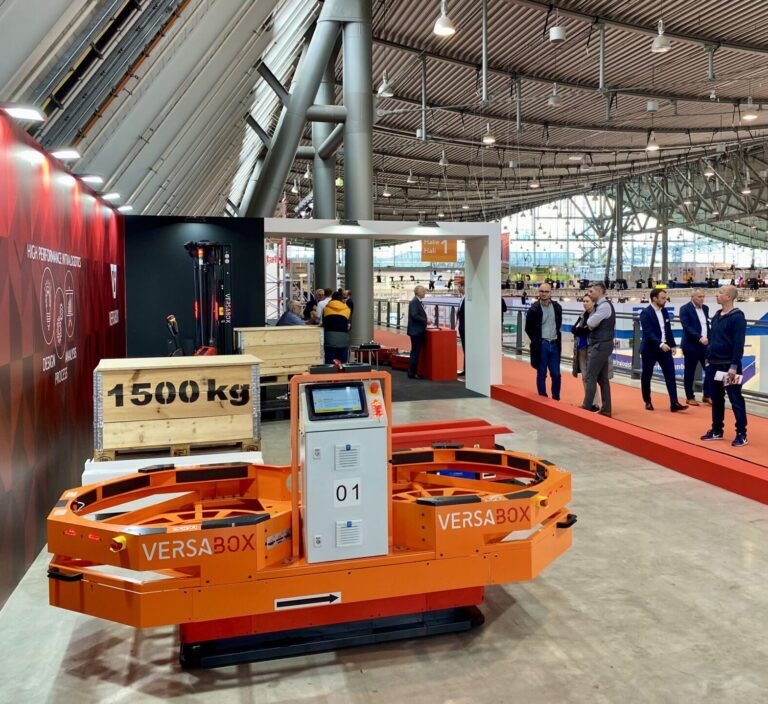This post is also available in:
![]() PL
PL
VERSABOT 500 and VERSABOT 1500 are an advanced type of automated guided vehicles, otherwise known as Autonomous Mobile Robots (AMRs). By choosing them, you choose state-of-the-art handling of intralogistics processes in warehouses, manufacturing plants, and sorting facilities. Wherever horizontal transport is necessary, VERSABOTs are able to replace manual labour and automatic conveyors very effectively. Thanks to a varied range of tools and accessories, they are able to transport virtually any type of payload.
You do not have to be afraid of technology. Automated guided vehicles are not overly complex machines, especially when considering their mechanical design. Their greatest strengths are true autonomy and incredible flexibility in adapting to existing working conditions.
Automated guided vehicles take over internal transport
Automated guided vehicles (AGVs) appeared in factories as early as mid-twentieth century. However, only recently have they become truly intelligent and truly autonomous. They operate efficiently and safely in a varied and ever-changing manufacturing environment. It is no longer necessary to limit them to certain sectors of a facility, or mark their environment using landmarks or path markings. They orient themselves in space thanks to a virtual map of the facility they have created themselves. This allows them to operate in entirely new as well as existing facilities without the need for major upgrades or modernisation. As a result, in recent years AGVs have slowly taken over more and more logistics tasks that have up until now been the exclusive domain of people.
VersaBox designs and manufactures AMR robots that are capable of transporting heavy loads. Like most AMRs currently on the market, VERSABOT 500 and VERSABOT 1500 are self-driving platforms with a load capacity up to 1000 kg. The can easily manoeuvre themselves under the payload and either tug or lift the pallet. And with that, they are off to their designated location. The robot makes independent decisions – the route itself, how to overcome obstacles, and how to react to objects that appear in its path. It can cooperate with existing on-site systems like the Warehouse Management System (WMS), the Manufacturing Execution System (MES), or Enterprise Resource Planning (ERP). Intelligent transport robots also share information between themselves.
By choosing an AMR, you get an excellent foundation to create all kinds of functionalities. Currently, this means a wide variety of modules and attachments that allow the transport of different types of payloads.
The four incarnations of VERSABOT
The modular design of VERSABOTs allows them to transport a wide variety of payloads – loaded pallets, crates with dry goods, and various types of frames, etc. In each configuration, the robot acts as a powertrain (a tractor or a tug) and a lift.
Automatic or manual coupler module for trolleys for the transport of crates and cages
These allow for efficient pickup and detachment of payloads transported in various types of cages and on trolleys, including the popular “Dolly” model. This is one of the most common uses of VERSABOT robots. Among other things, it allows for the efficient delivery of components to manufacturing cells, and the collection of finished products and their delivery to the warehouse.
Lift module to operate with a pallet feeder
It facilitates the efficient transport of heavy steel loads, construction aggregates and construction materials on pallets. Pallet pickup is possible thanks to special feeders that allow the robots to drive under the pallet and lift it to a height that allows unhampered movement. The robot delivers the payload in a similar fashion: it drives under the feeder, then lowers the lift and drives out from under the feeder.
Hanger for transporting frames
The greatest service it can provide is the transport of heavy steel frames. It optimises product transport between manufacturing cells, e.g. between a welding shop and a paint shop, or the delivery of finished frames to the assembly line. Implementation is possible in all industries, including, for example, woodwork production, in automotive factories, manufacture of fencing spans, scaffolding, containers, and many other frame structures.
Roller feeder module
Operates with roller conveyors. The AMR becomes a flexible connection between two roller conveyors. It is also a quick and convenient way to collect payloads from the roller conveyor for transport to a warehouse or an assembly station. With a traditional “fixed” connection, any attempt at modification (extension or elongation, connection to a different payload delivery point) is a costly and time-consuming affair. In the case of an AMR, all you have to do is reprogram its route.
In the future, AMR modules and tools may be as advanced as, for example, a manipulating arm of a stationary robot. Using the arm, the AMR could unload and load a transport box or cage on its own. This is just a preview of the possibilities that come with automated guided vehicles. If you decided to implement VERSABOTs, you will get a machine with unparalleled functionality, flexibility, and adaptability.







